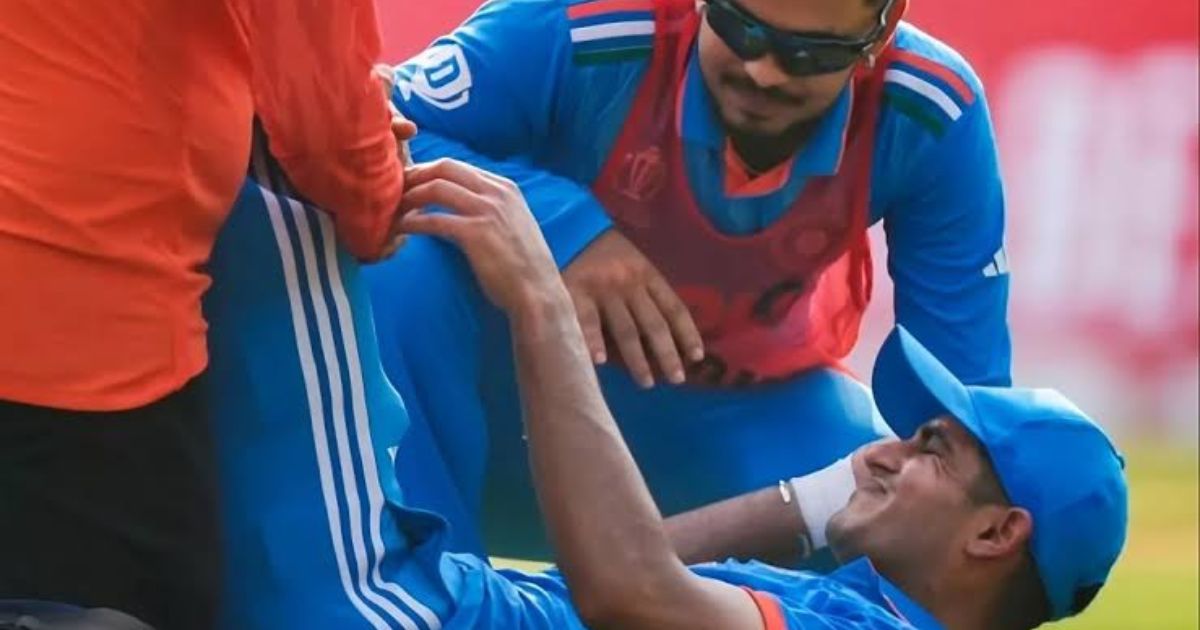
Introduction
If you’re a cricket fan, you’ve probably seen moments when a player gets injured and leaves the field with the status “Retired Hurt.” But what happens after that? Can a retired hurt player play again? The simple answer is YES! According to the laws of cricket, a player who retires hurt can return to continue their innings if they recover in time.
In this post, we’ll break down everything you need to know about the retired hurt rule, how it works, real-life examples, and the difference between retired hurt and retired out. Whether you’re new to cricket or want to understand the finer details, this guide will answer all your questions!
What Does “Retired Hurt” Mean in Cricket?
The Definition
When a batsman is injured or unable to continue playing due to illness or some other valid reason, they can leave the field and stop batting temporarily. This is called “Retired Hurt.”
- It’s like pressing pause on their innings.
- They can resume their batting later in the innings when they’re fit enough.
According to the Laws of Cricket
As per Law 25.4 of the Marylebone Cricket Club (MCC) laws:
“A batsman who retires due to injury or illness is entitled to resume his/her innings at any time.”
Can A Retired Hurt Player Play Again?
The Short Answer
Yes! A player who retires hurt can return to bat later in the same innings, provided:
- The team hasn’t been all out.
- The player has recovered and is physically able to bat again.
- The innings is still ongoing.
They will continue from the score they were on when they retired hurt.
How Does It Work?
- When a player retires hurt, their innings is “paused” but not “ended.”
- If they return, they resume their innings from the same score and face the next delivery whenever their turn comes (or when they feel ready).
- If they don’t return, they remain “retired not out” at the end of the innings.
Retired Hurt vs Retired Out: What’s the Difference?
Example of Retired Out
- In the IPL 2022, Ravichandran Ashwin (Rajasthan Royals) retired out to allow a more aggressive batter to come in.
- Once retired out, he could not return to bat later.
Real-Life Examples of Retired Hurt Players Returning to Bat
1. Anil Kumble (India vs West Indies, 2002)
- Kumble was hit on the jaw and had a broken jaw.
- Despite retiring hurt, he came back to bowl 14 overs with his jaw strapped and took Brian Lara’s wicket!
- Though not batting, it showed his commitment to return and contribute.
2. Tamim Iqbal (Bangladesh vs Sri Lanka, 2018)
- Tamim fractured his wrist and retired hurt.
- Later, he returned to bat with one hand when Bangladesh was 9 wickets down.
- His bravery helped Bangladesh add crucial runs!
3. Rishabh Pant (India Tour of England, 2022)
- In a warm-up match, Pant retired hurt but returned later after recovering.
These examples show that retired hurt doesn’t mean the end of the road for a batsman in the same innings.
What Happens If A Player Cannot Return?
If the player cannot come back to bat:
- They are marked “Retired Not Out” at the end of the innings.
- Their score stays as it was when they left.
- The team moves on without them, but they are not considered dismissed.
Are There Any Restrictions or Rules for Coming Back?
No Time Limit
- There is no specific time limit for when a player must return.
- As long as the innings is still on, they can come back at any point.
They Return at the Fall of a Wicket
- Usually, a retired hurt player returns when another batsman gets out, and it’s their turn to bat.
- They can also request to bat earlier if the team agrees and the fielding team has no objection.
Why Do Players Retire Hurt?
- Injury (Common Reason):
- Hit by a bouncer.
- Pulled muscle or cramps.
- Finger injuries from fast deliveries.
- Illness or Fatigue:
- Sudden sickness (like vomiting or dehydration).
- Exhaustion due to extreme weather conditions.
- Tactical (But Rare):
- To avoid worsening an injury before an important match.
- But tactical retirements without injury can be controversial unless they fall under “retired out.”
What Does “Retired Not Out” Mean?
- If the batsman doesn’t return to continue their innings by the end of the team’s innings, they are retired not out.
- It is not considered a dismissal.
- It’s different from “retired out,” where the batsman chooses not to return and is counted as out.
FAQs About Retired Hurt Players
Q1: Can a retired hurt player return in the next innings?
A: No. A batsman can only return in the same innings they retired hurt. They will bat again in the next innings as per usual if they are fit.
Q2: Can a player retire hurt and come back if the team is 9 wickets down?
A: Yes. If a team loses 9 wickets, the retired hurt batsman can return as the last batsman (if they’re fit) and continue their innings.
Q3: Does retiring hurt count as a dismissal?
A: No. Retiring hurt is not a dismissal. The batsman remains “not out.”
Q4: Can a retired hurt player be substituted?
A: Only a substitute fielder is allowed, not a substitute batsman. Another batsman cannot take the place of a retired hurt player at the crease.
Conclusion
So, Can A Retired Hurt Player Play Again?
Yes! A player who retires hurt can return to bat later in the innings if they recover. Cricket laws allow this flexibility because player safety is a priority. Whether it’s a cramp, a nasty blow, or extreme fatigue, the game gives batters the chance to rest and return if they’re fit again.
It’s important to remember the difference between retired hurt (temporary break, return possible) and retired out (voluntary withdrawal, return not allowed).
Next time you’re watching a match and a player retires hurt, you’ll know they can make a comeback and maybe even change the game!
Also Check:
• Can Chennaiyin FC Qualify For Playoffs? An In-Depth Analysis
• Can Mumbai Qualify For Playoffs 2022? An In-Depth Analysis
• Can We Sell SME IPO on Listing Day? A Comprehensive Overview
• Can IAS Officer Do Business? Understanding the Rules and Boundaries




1 thought on “Can A Retired Hurt Player Play Again? Cricket Rules Explained!”